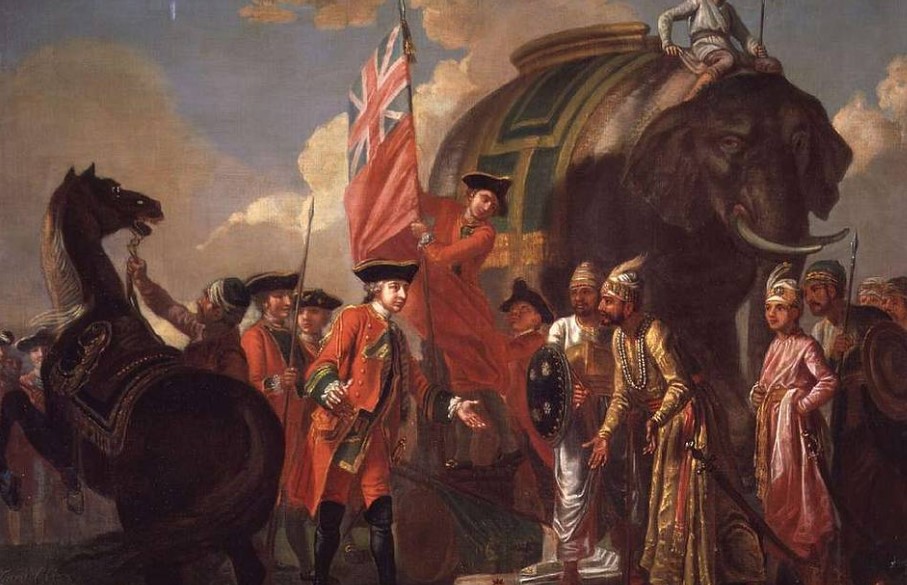
Modern History MCQs – 1 (Arrival of Europeans in India)
Most important multiple choice questions from the chapter – Arrival of Europeans in India MCQs.
Home » UPSC Study Materials » Prelims Express » Chapterwise MCQs » Modern History MCQs » Modern History MCQs – 17 (Quit India Movement)
Quit India Movement MCQs with answers and explanations for UPSC and Other examinations.
1. Quit India movement began on which among the following dates ?
(a) 8th August, 1942
(c) 15th August, 1942
(b) 20th August, 1942
(d) 25th August, 1942
Correct Answer – (a) 8th August, 1942
2. The slogan ‘Do or Die’ was associated with which among the following movements ?
(a) Civil Disobedience Movement
(b) Non-cooperation movement
(c) Khilafat movement
(d) Quit India movement
Correct Answer – (d) Quit India movement
3. Which among the following movements is also known as The August Kranti ?
(a) Civil Disobedience Movement
(b) Non-cooperation movement
(c) Khilafat movement
(d) Quit India movement
Correct Answer – (d) Quit India movement
4. Consider the following statements regarding the Quit India Movement ?
1. It was a complete Non-Violent Movement.
2. It was led by Mahatma Gandhi.
Select the correct answer using the codes given below :
(a) 1 only
(b) 2 only
(c) Both 1 & 2
(d) None of the above
Correct Answer – (b) 2 only
5. During the Quit India movement, Mahatma Gandhi was imprisoned in which among the following places ?
(a) Sabarmati Ashram
(b) Aga Khan Palace
(c) Cellular Jail
(d) None of the Above
Correct Answer – (b) Aga Khan Palace
6. Consider the following statements regarding the Quit India Movement ?
1. The Hindu Mahasabha did not support the movement.
2. Muslim League supported the movement.
Select the correct answer using the codes given below :
(a) 1 only
(b) 2 only
(c) Both 1 & 2
(d) None of the above
Correct Answer – (a) 1 only
7. Who was the President of the Indian National Congress when it passed the ‘Quit India’ resolution?
(a) Mahatma Gandhi
(b) Maulana Abul Kalam Azad
(c) Sardar Patel
(d) Pt. Jawahar Lal Nehru
Correct Answer – (b) Maulana Abul Kalam Azad
8. Who among the following ran the famous ‘Congress Radio’ during the ‘Quit-India’ movement ?
(a) Aruna Asaf Ali
(b) Jai Prakash Narayan
(c) Usha Mehta
(d) None of the above
Correct Answer – (c) Usha Mehta
9. Who among the following is known as the “Grand Old Lady of India” ?
(a) Aruna Asaf Ali
(b) Sarojini Naidu
(c) Usha Mehta
(d) Annie Besant
Correct Answer – (a) Aruna Asaf Ali
10. Which among the following movements involved the formation of parallel governments at many places ?
(a) Civil Disobedience Movement
(b) Non-cooperation movement
(c) Khilafat movement
(d) Quit India movement
Correct Answer – (d) Quit India movement
11. During the Quit India movement, ‘The Jatiya Sarkar’ was associated with Which among the following places ?
(a) Ballia, UP
(b) Bombay, Maharashtra
(c) Tamluk, Midnapore, Bengal
(d) Satara, Maharashtra
Correct Answer – (c) Tamluk, Midnapore, Bengal
More questions are coming soon. Join us on Whatsapp for latest updates: Join CivilsCracker on Whatsapp

Most important multiple choice questions from the chapter – Arrival of Europeans in India MCQs.

Most important multiple choice questions from the chapter – Battle of Plassey and Battle of Buxar MCQs.

Most important multiple choice questions from the chapter – Social and Religious Reform Movements MCQs.

Most important multiple choice questions from the chapter – Anglo Mysore Wars and Anglo Maratha Wars MCQs.

Most important multiple choice questions from the chapter – Governor Generals of India MCQs.

Most important multiple choice questions from the chapter – Revolt of 1857 MCQs.

Most important multiple choice questions from the chapter – Organizations before Indian National Congress MCQs.

Most important multiple choice questions from the chapter – Important Sessions of Indian National Congress MCQs.

Most important multiple choice questions from the chapter – Partition of Bengal and Swadeshi Movement MCQs.

Most important multiple choice questions from the chapter – Surat Split and Lucknow Pact MCQs.

Most important multiple choice questions from the chapter – Arrival of Gandhi and Jallianwala Bagh Massacre MCQs.

Most important multiple choice questions from the chapter – Khilafat and Non Cooperation Movement MCQs.

Most important multiple choice questions from the chapter – Simon Commission and Nehru Report MCQs.

Most important multiple choice questions from the chapter – Civil Disobedience Movement MCQs.

Most important multiple choice questions from the chapter – Communal Award and Poona Pact MCQs.

Most important multiple choice questions from the chapter – Individual Satyagraha and Cripps Mission MCQs.

Most important multiple choice questions from the chapter – Indian National Army and Royal Indian Navy Mutiny MCQs.

Most important multiple choice questions from the chapter – Cabinet Mission and Formation of Constituent Assembly MCQs.

Most important multiple choice questions from the chapter – Independence and Partition of India MCQs.
We are adding new Notes, Chapterwise MCQs, Quizzes, Previous Years Questions everyday
We are adding new Notes, Chapterwise MCQs, Quizzes, Previous Years Questions everyday